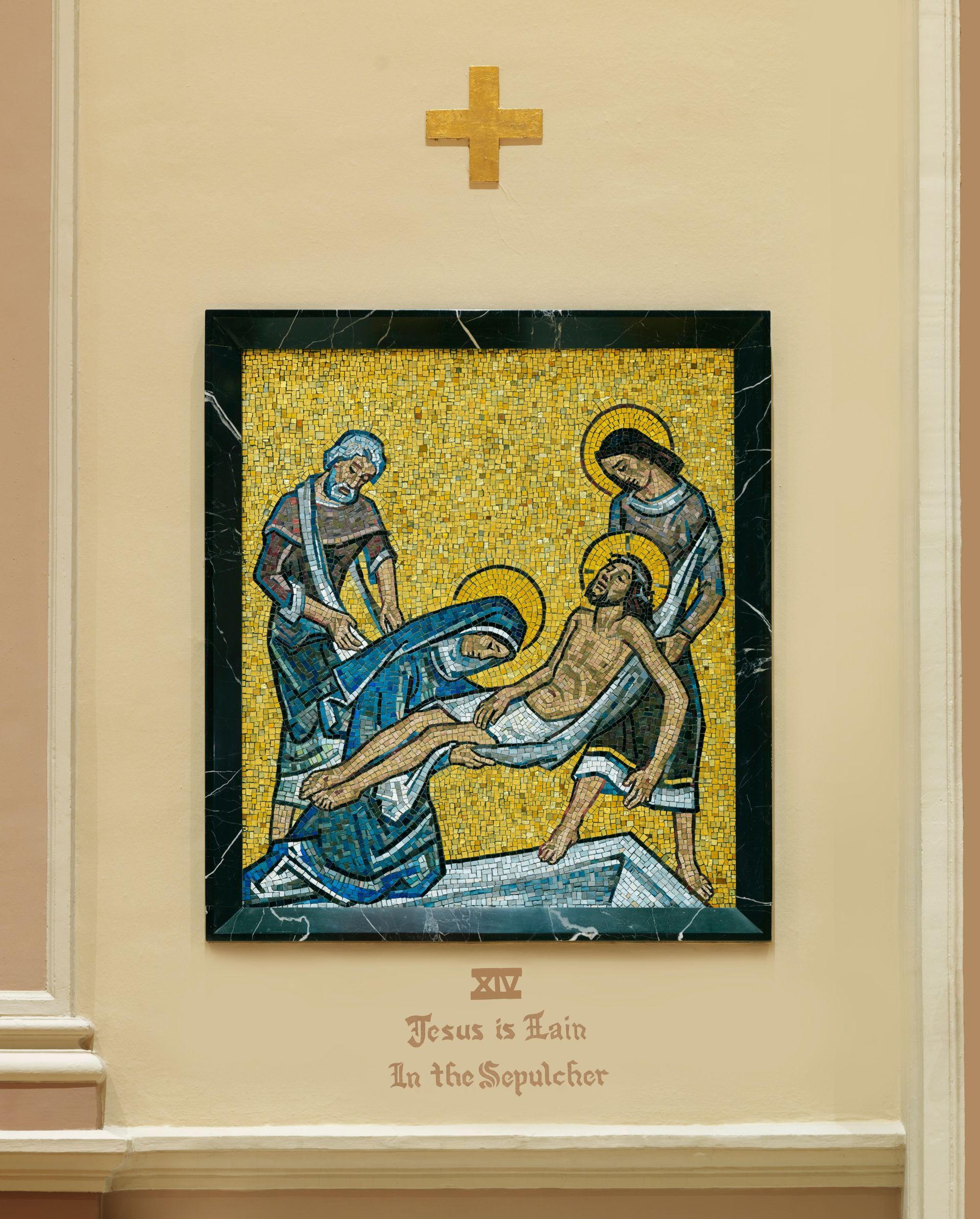The Stations of the Cross
In churches across the United States few mosaic stations of the cross exist. Ordinarily one sees painted statues, stylized pictures, or carvings of wood. St. Augustine’s fourteen stations are notable exceptions, not just because they are mosaic, but also from the view of the quality of their design.
Professor Rudolf Scheffler, who designed the stations specifically for our church, chose blue belge marble to frame the stations. The colors of the mosaic are largely shades of gold, blue and brown. While he clearly was aware of the Byzantine tradition of mosaic art with its reliance on elongated figures, Professor Scheffler designed each station to capture a moment of tension for the modern viewer.
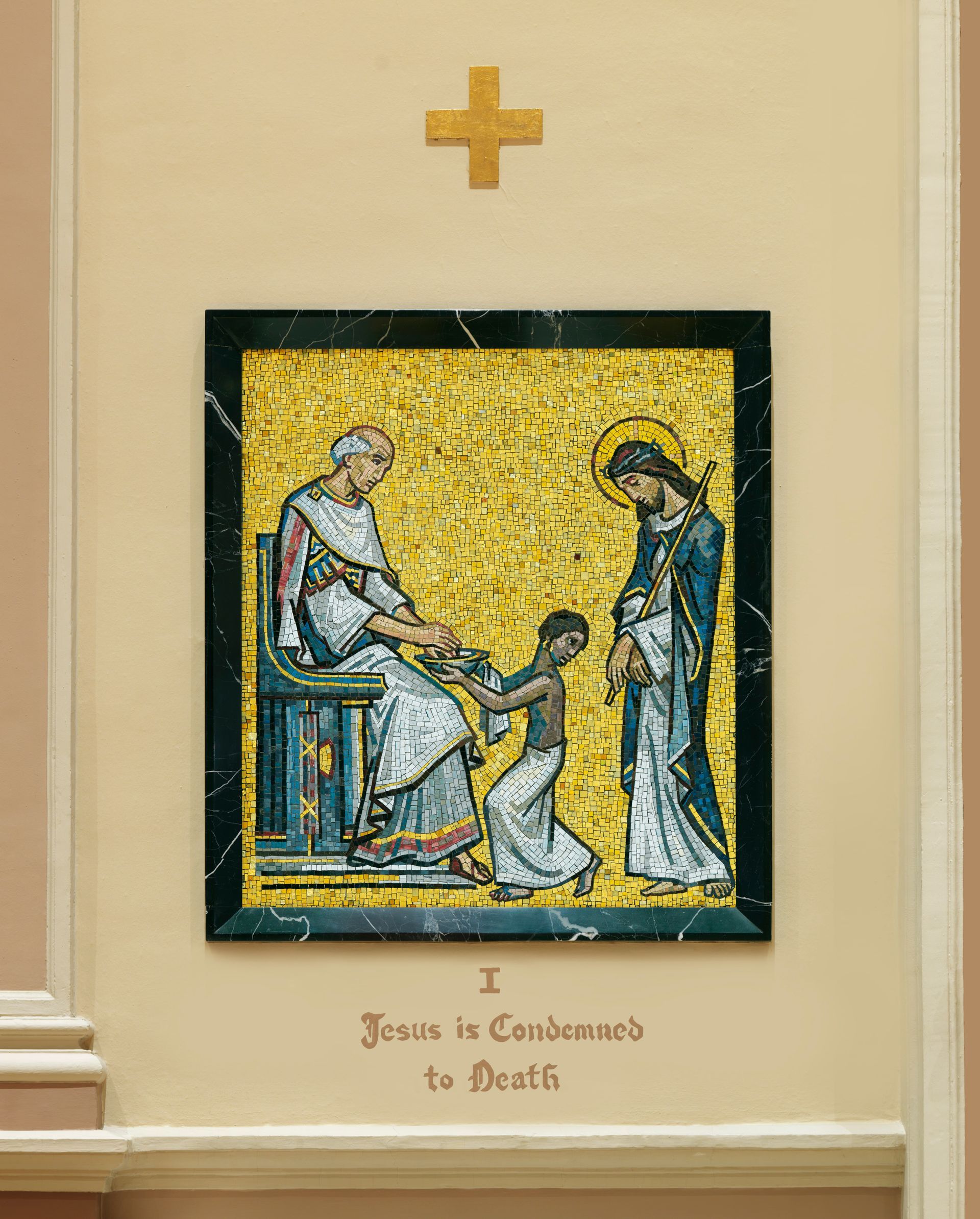
The First Station
In the first station Pilate washes his hands as a ritual gesture to absolve himself of all responsibility for the death of Jesus. He looks at Jesus and appears almost dazed. The young boy holds the dish for Pilate but focuses on Jesus who is the center of attention. Although Pilate and the young boy seem to be fixed on Jesus, he appears isolated, looking downward as if transfixed by the death that is coming. The movement of the mosaic is towards Jesus and his journey toward death.
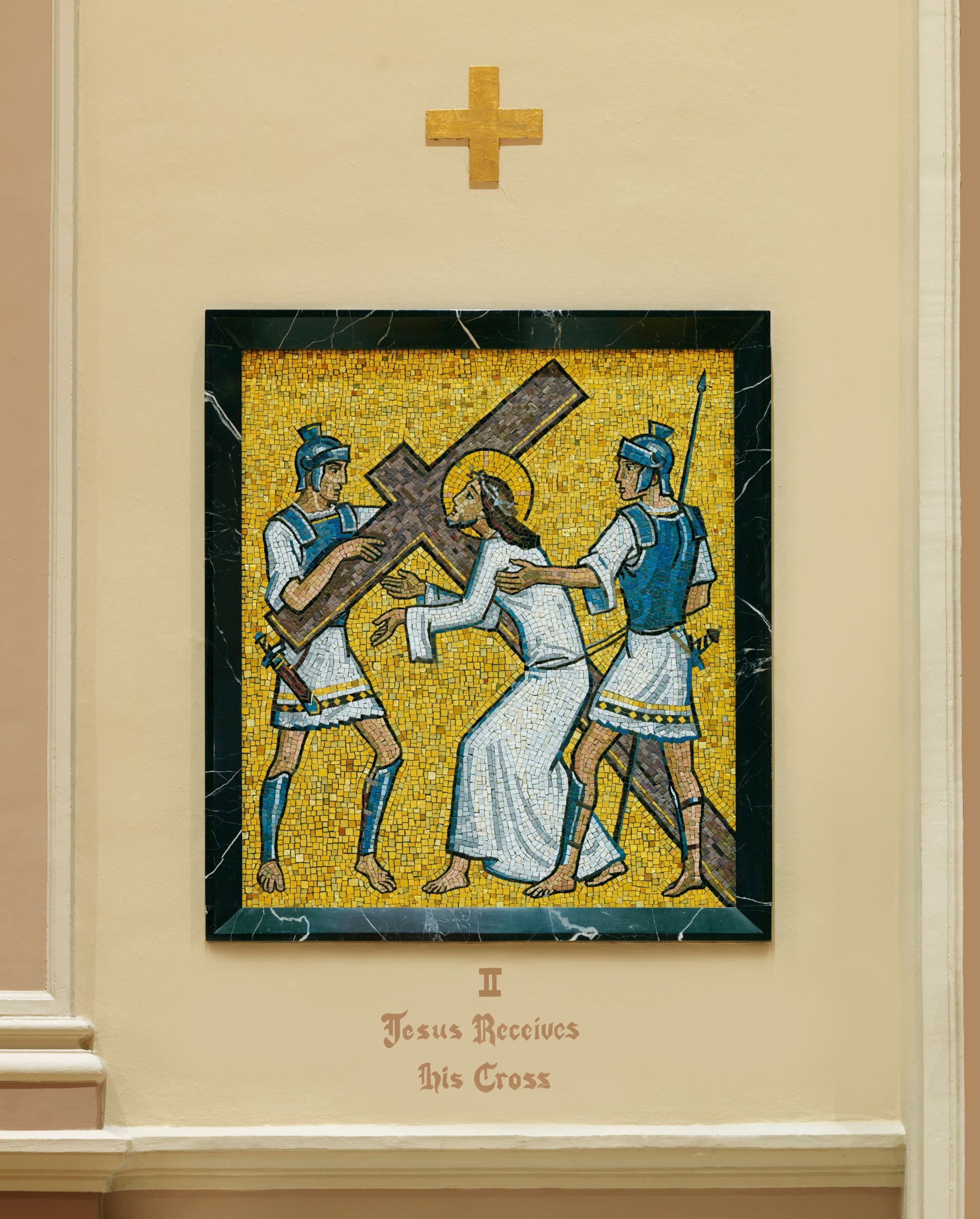
The Second Station
The designer, Rudolf Scheffler, began his art studies at the age of 15 when he received a scholarship to study at the Royal Academy in Dresden, Germany. Later he became a professor there. He won the Prix de Rome and a special grant to study the medieval art of painting frescoes. He came to the United States as the head designer of Ravenna Mosaic Company of St. Louis. Among his works in the United States, the best known are his apse of the Church of the Immaculate Conception in Waterbury, Connecticut, and his murals in the state office building in Columbus, Ohio.
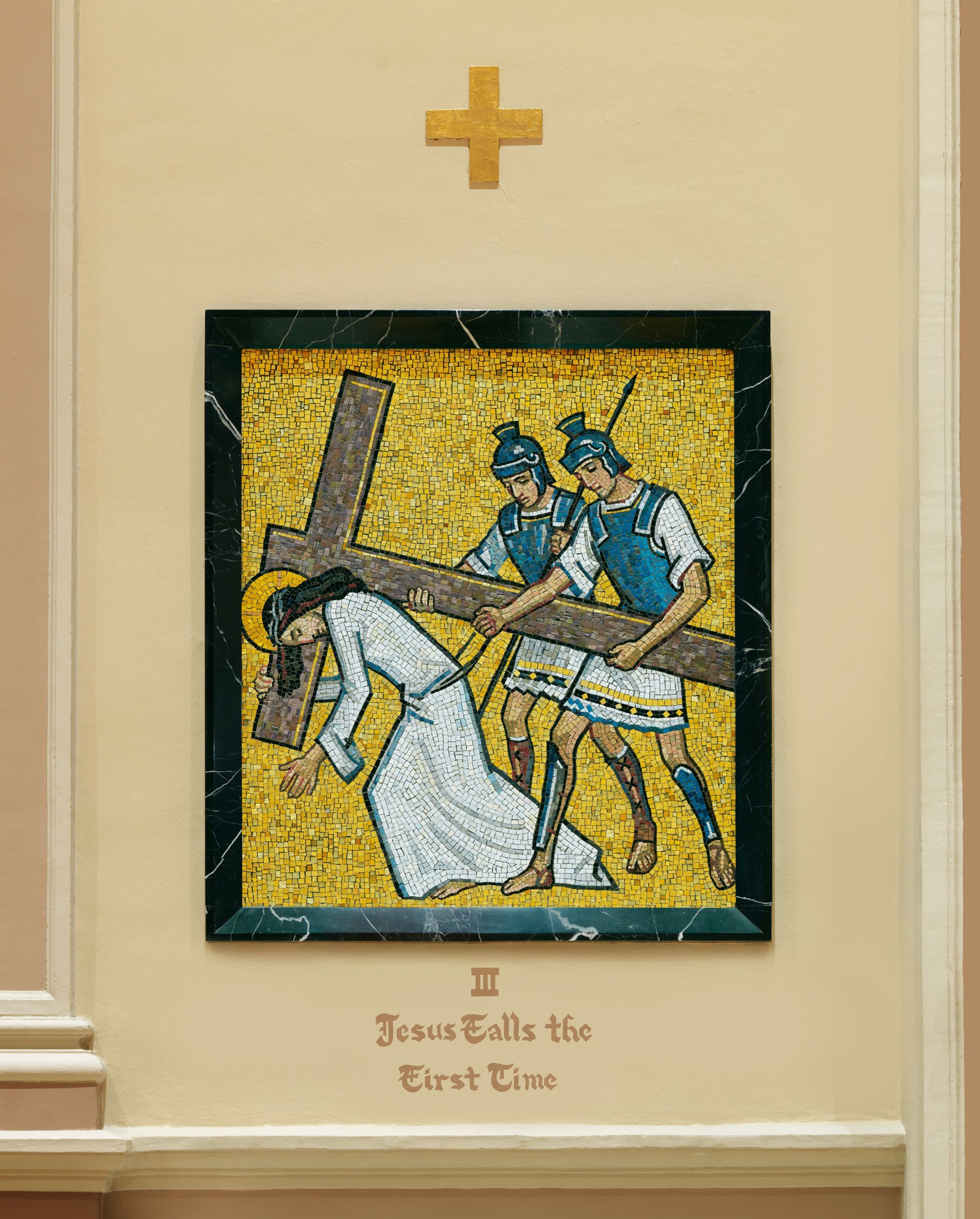
The Third Station
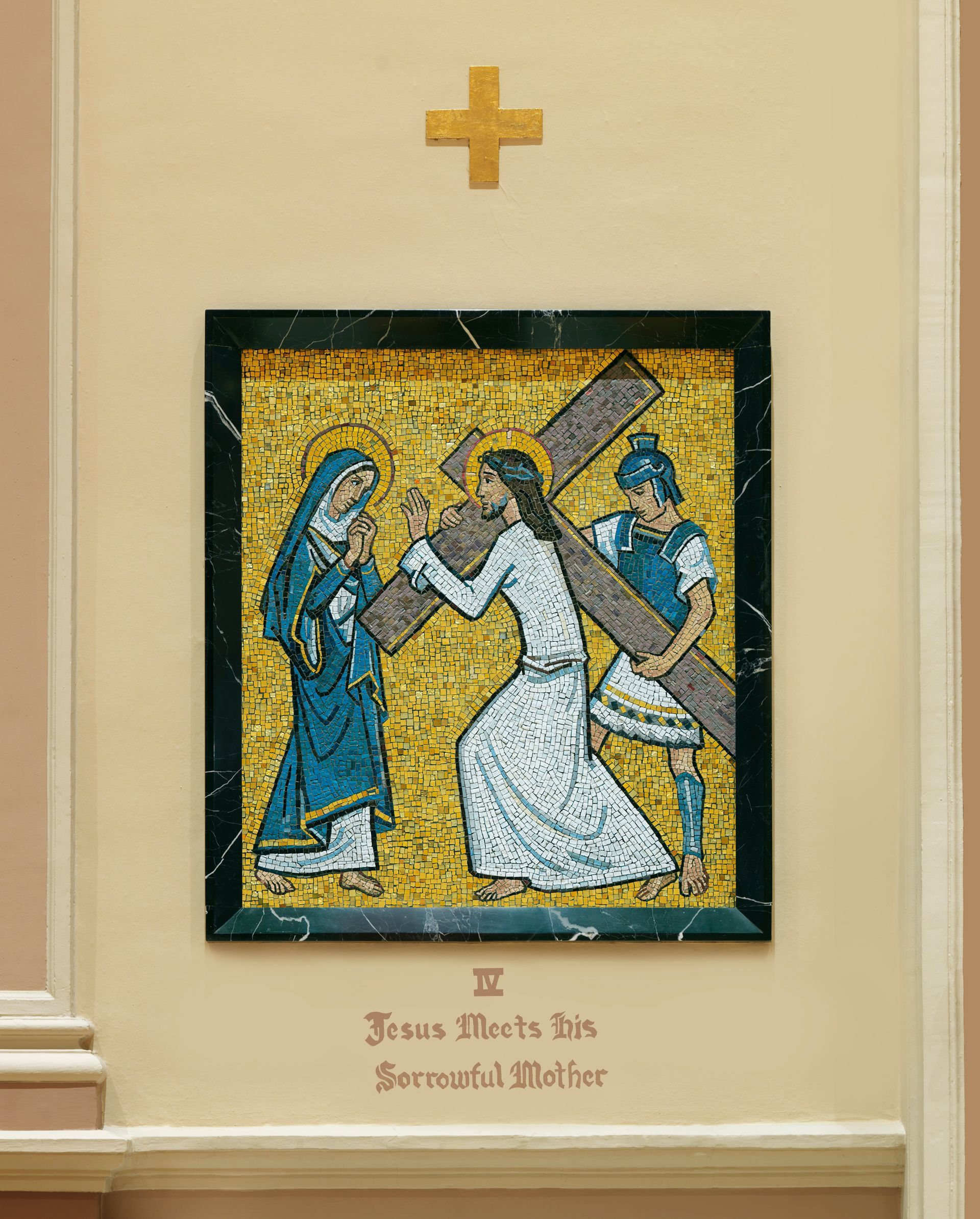
The Fourth Station
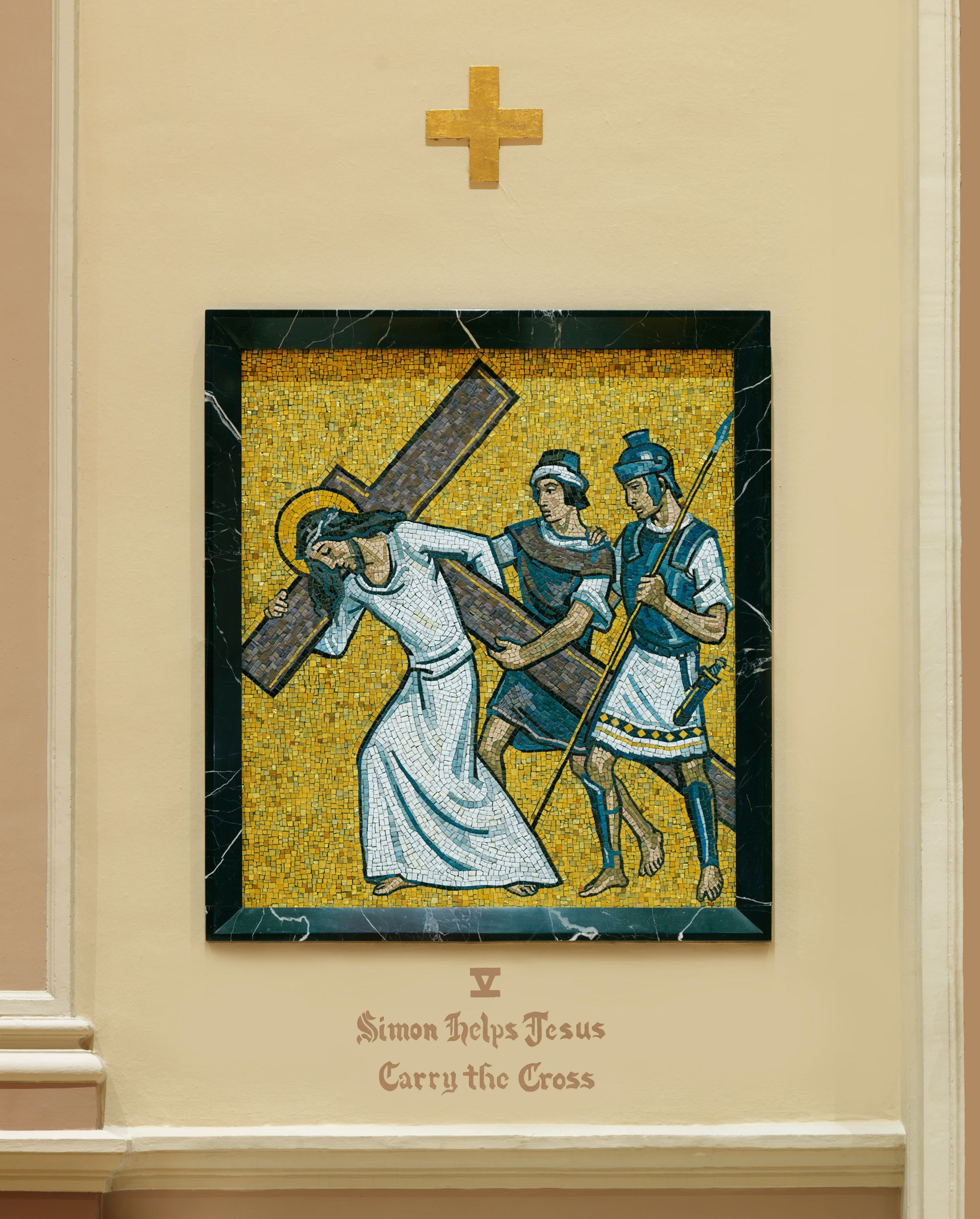
The Fifth Station
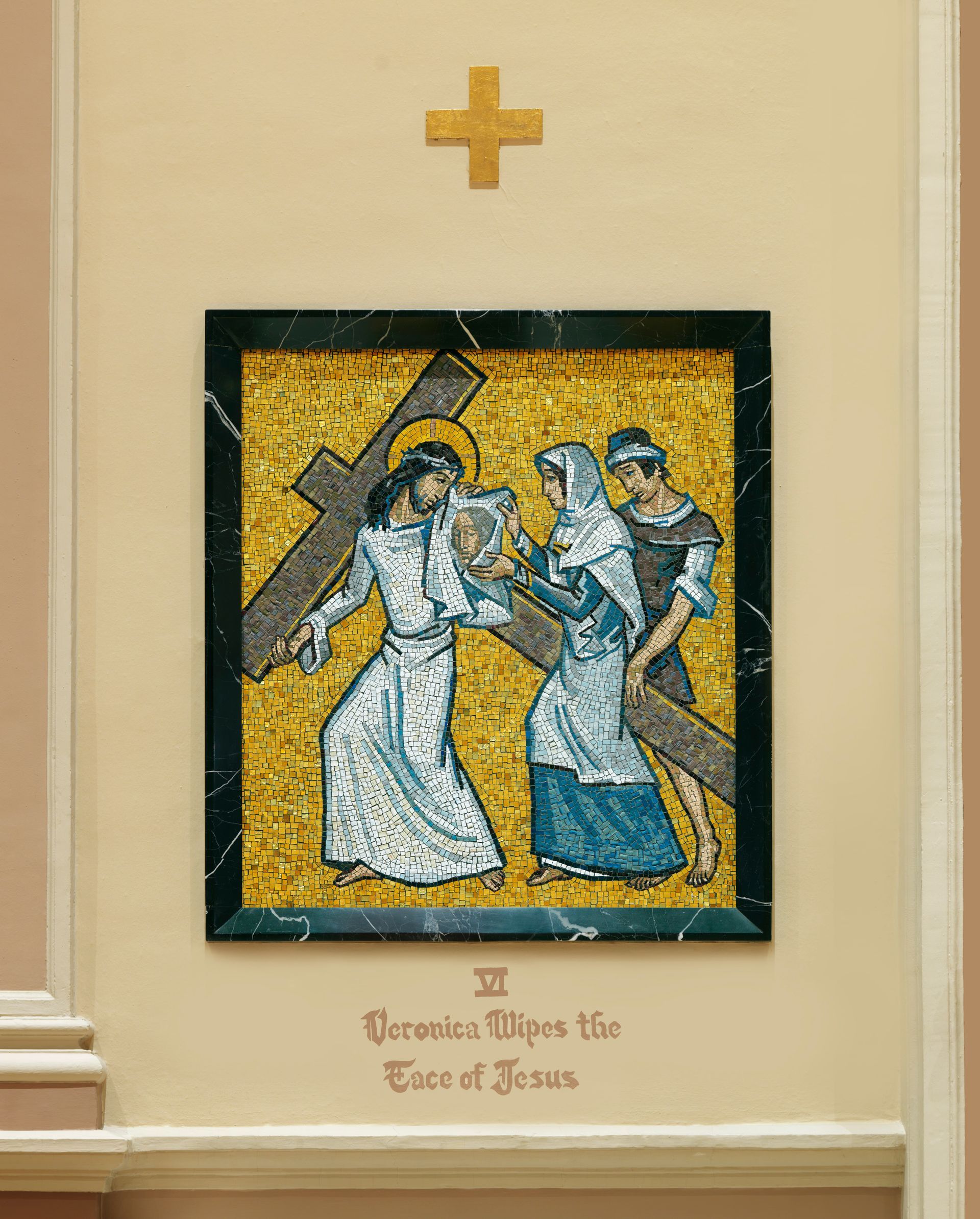
The Sixth Station
The stations of the cross were executed by Wagner Brothers in Berlin Germany, in the late 1950s at a cost of $1,000 each. After the stations were crafted, there was some apprehension that they would not be delivered. Although the company was in the Allied Zone of West Germany, it stood on the border between the divided Berlin. In fact the building later became part of the Berlin Wall, which was demolished in the late 1980s.
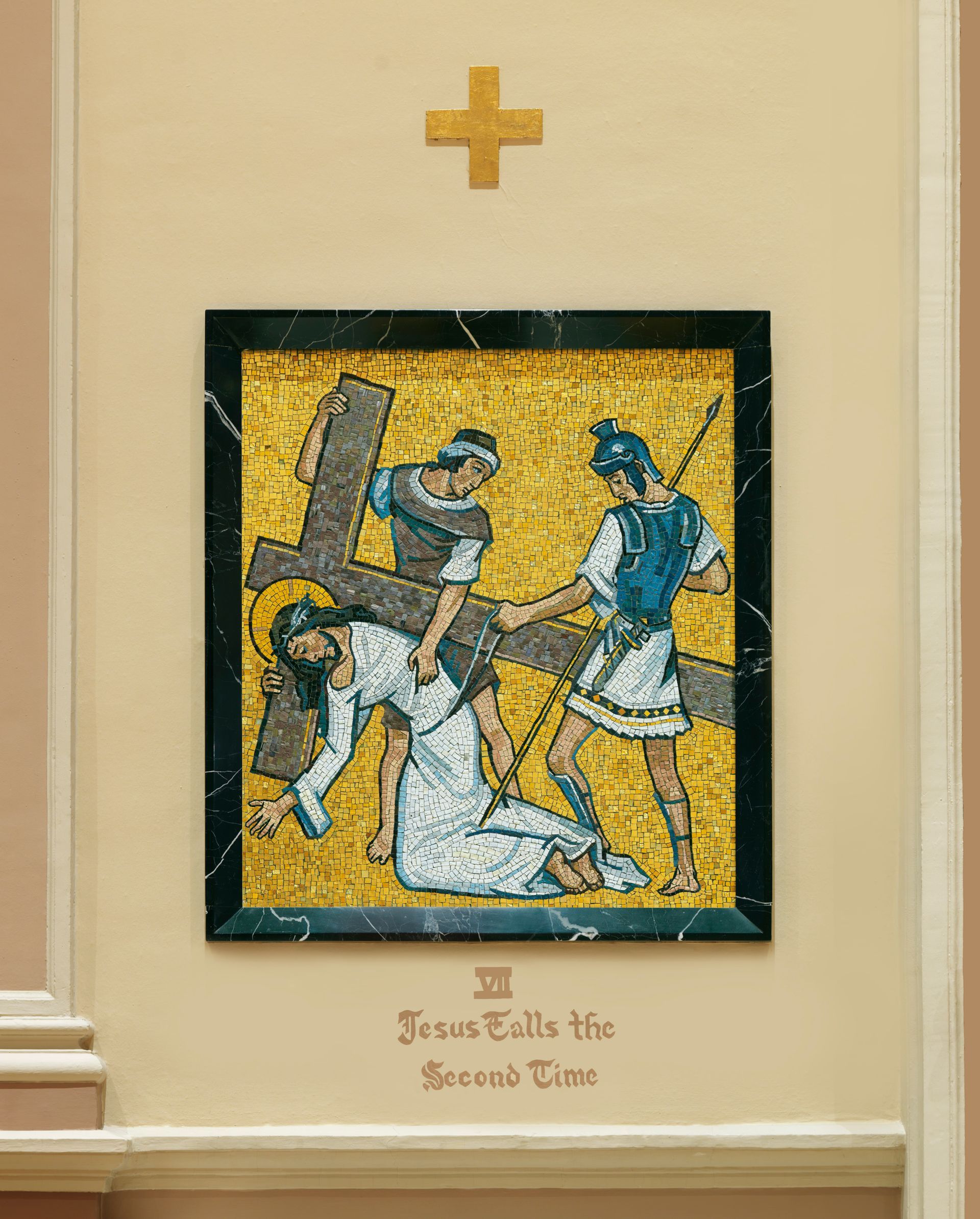
The Seventh Station
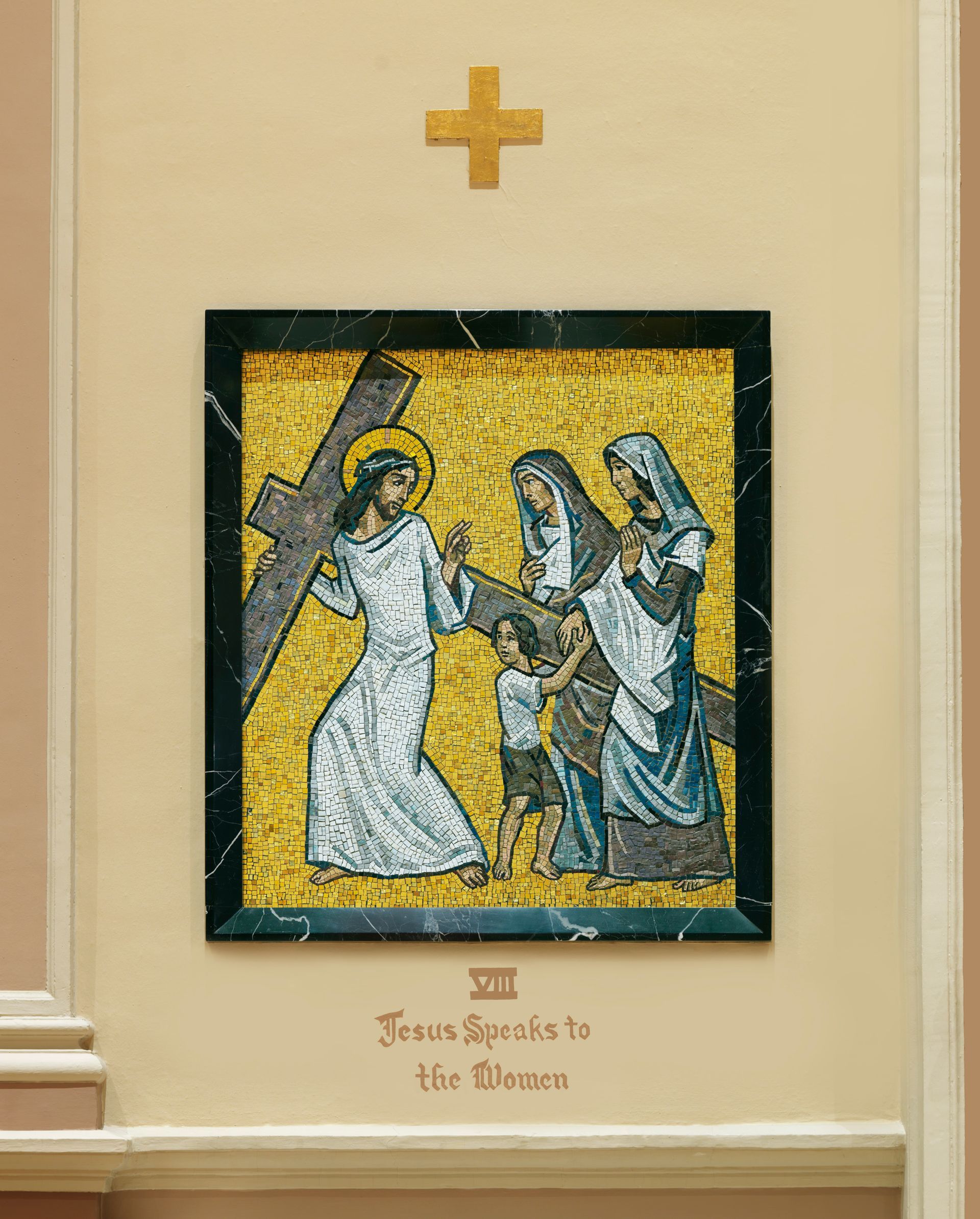
The Eight Station
The only other place a child appears in the stations is at the eighth station in which Jesus meets two women of Jerusalem who cry over his painful suffering. Jesus lifts his finger to attempt to comfort the women and seems, for a moment, to be free of his own pain. Notice that the cross appears suspended in midair. The child stares at Jesus and grabs for his mother’s hand as if afraid of what he is seeing.
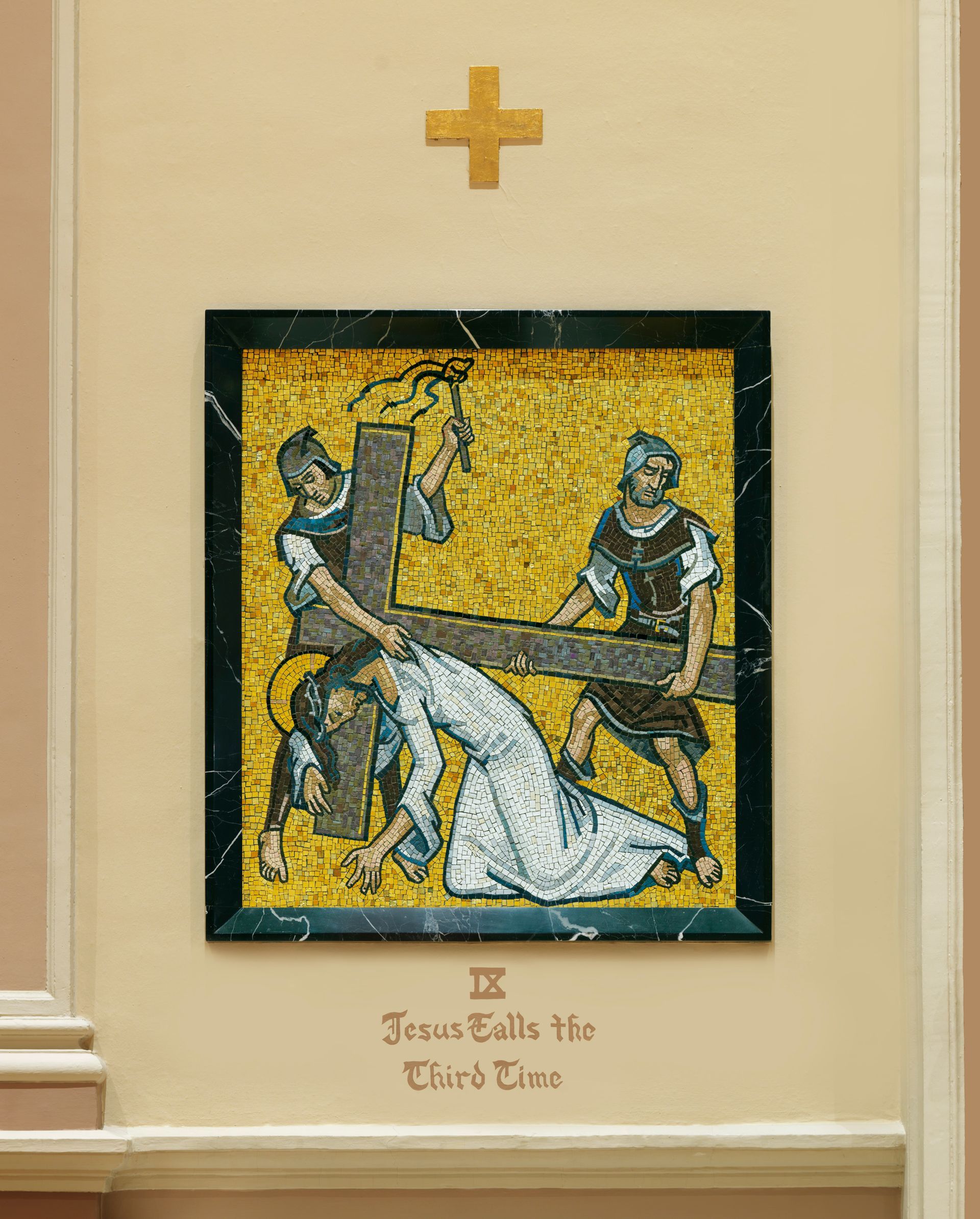
The Ninth Station
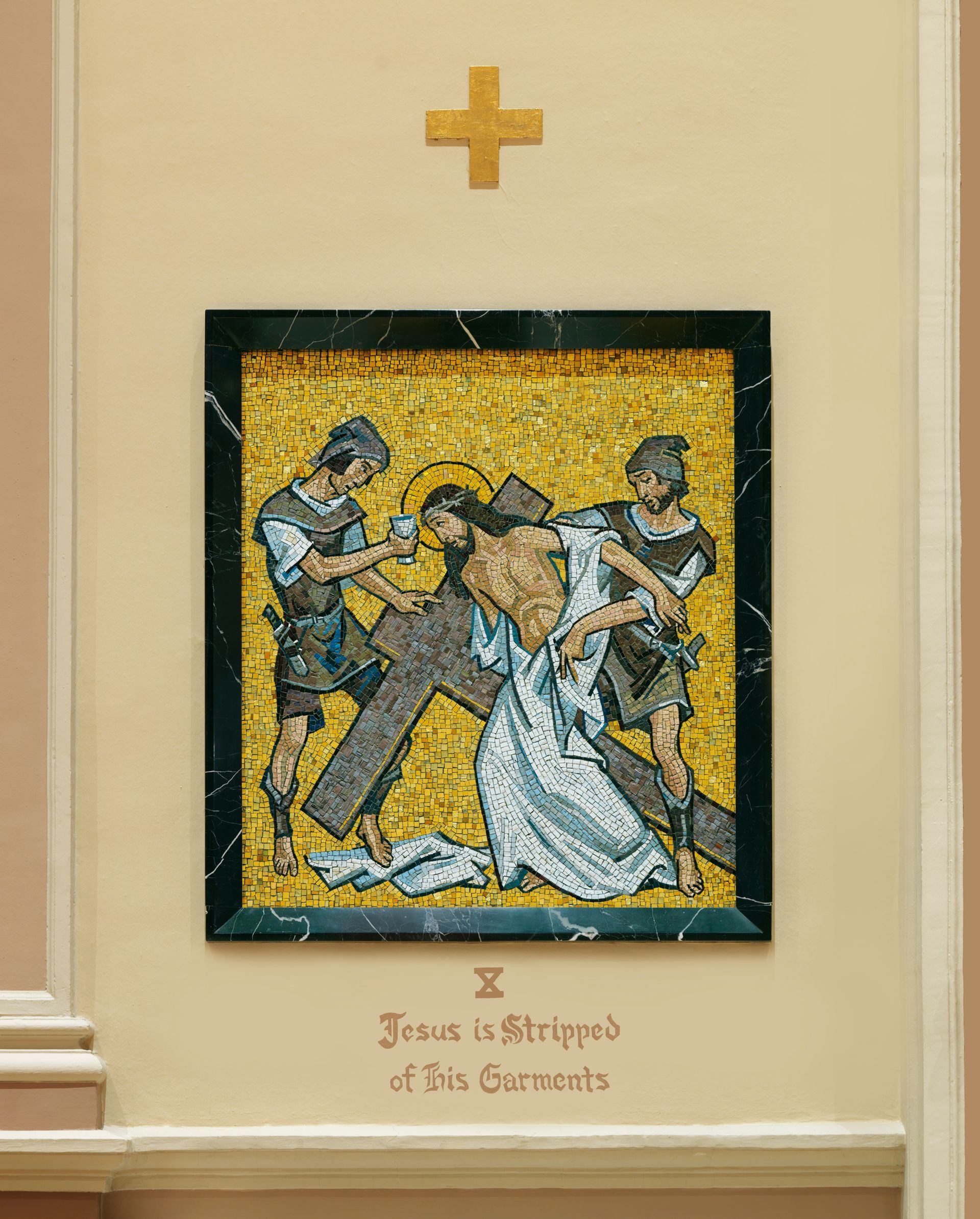
The Tenth Station
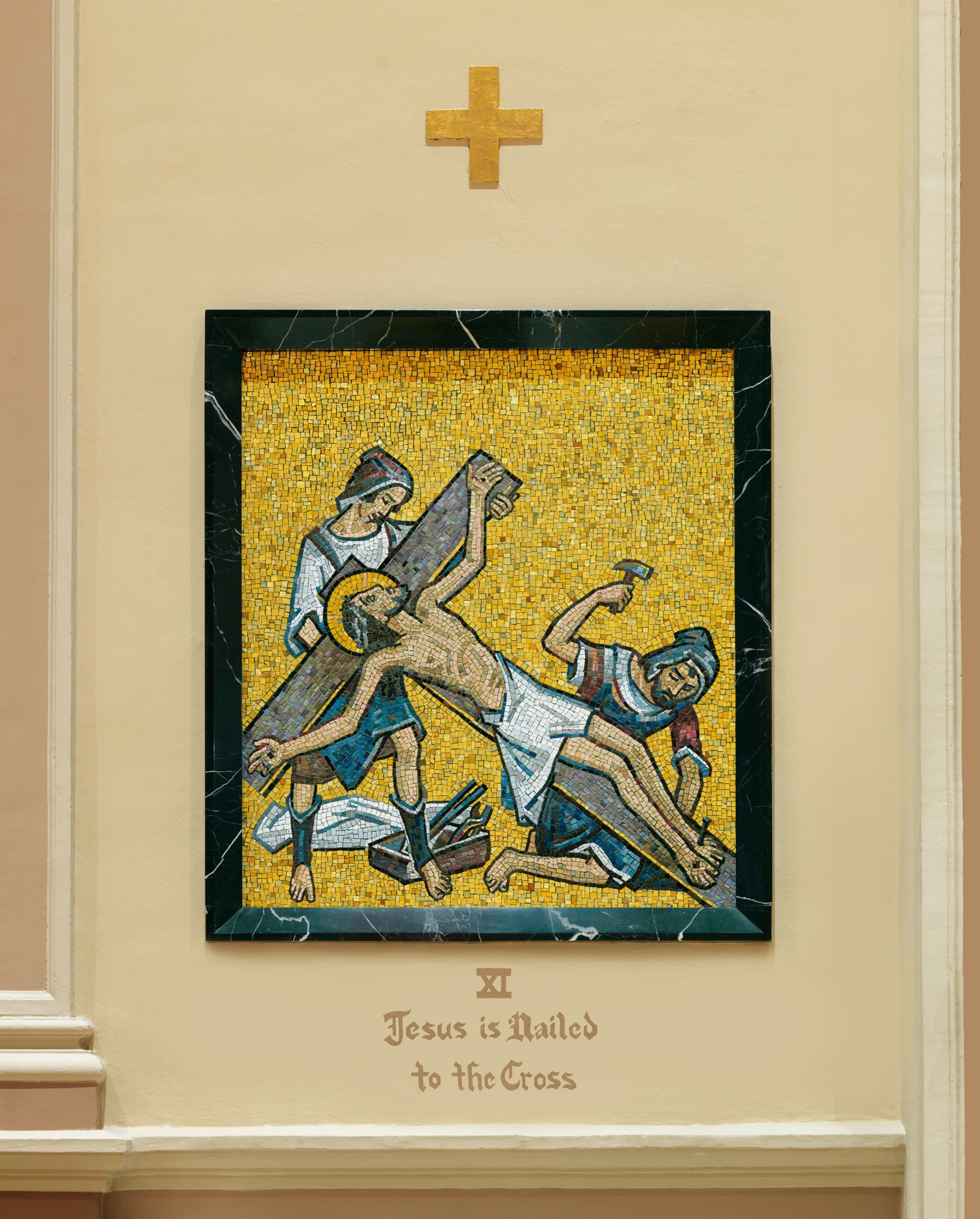
The Eleventh Station

The Twelfth Station
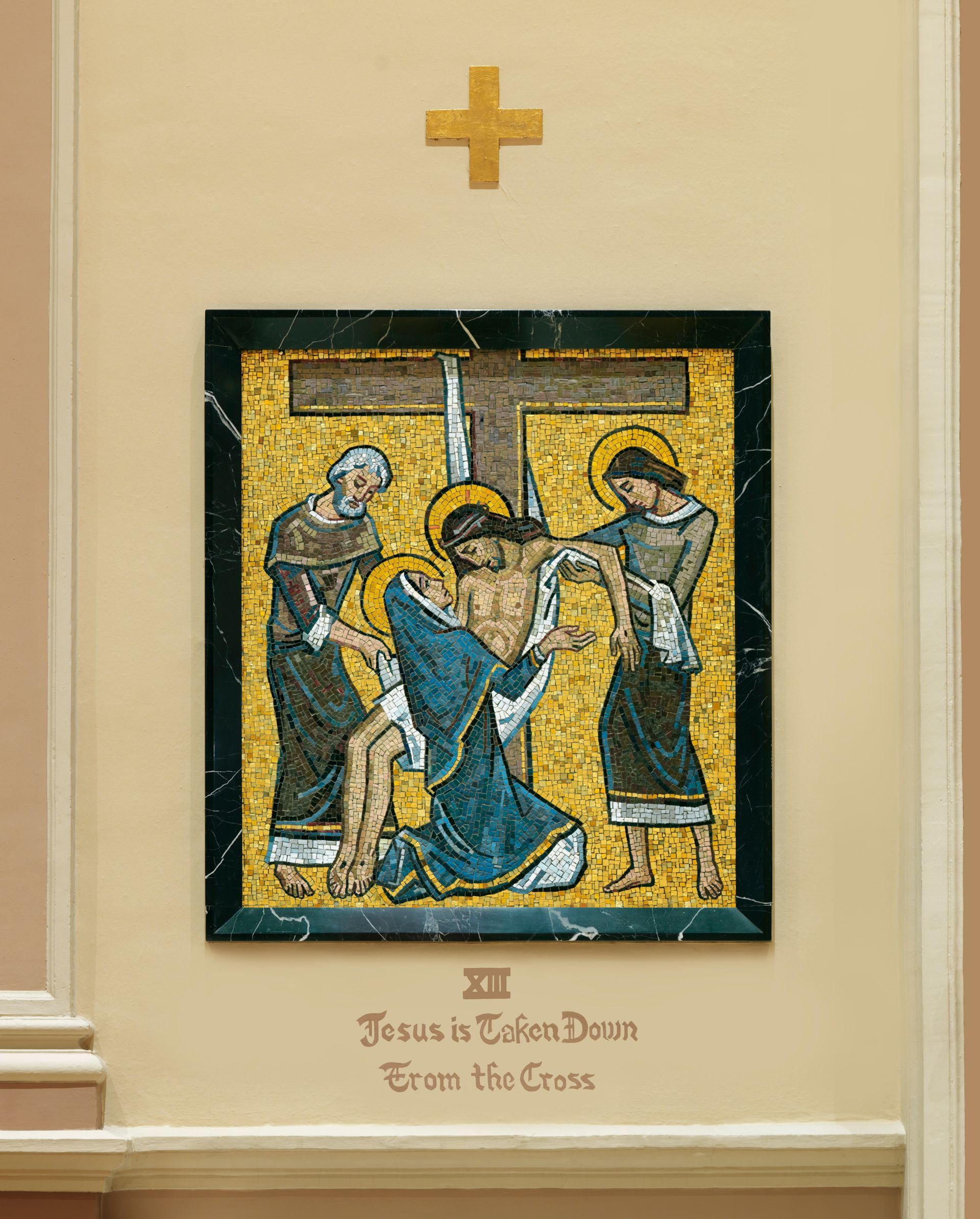
The Thirteenth Station
